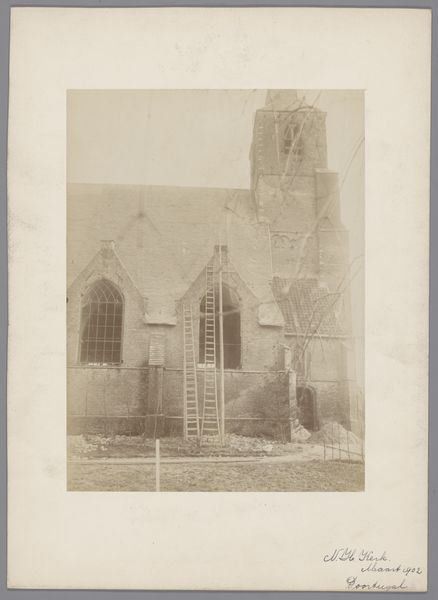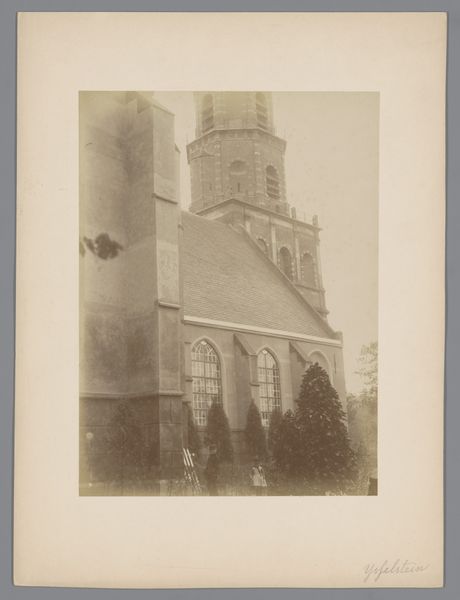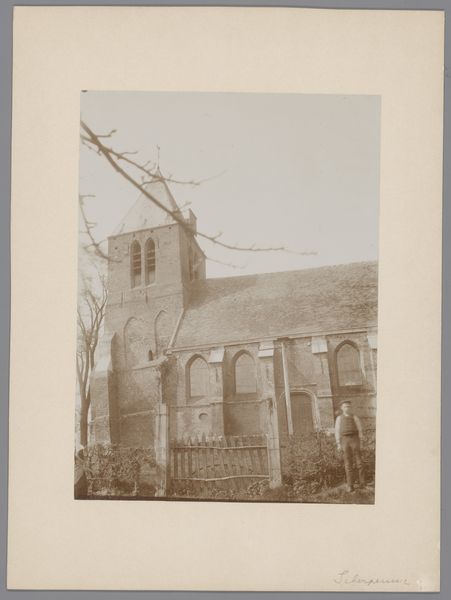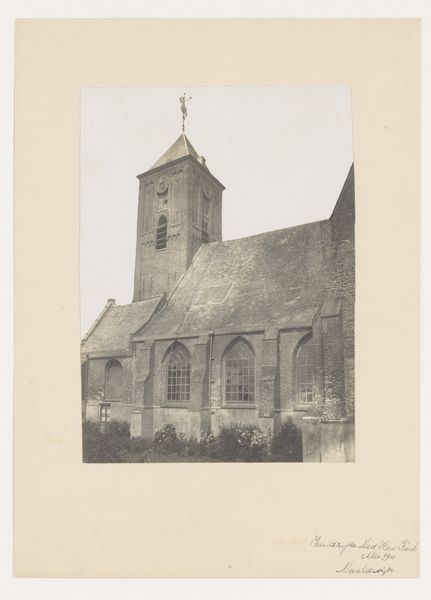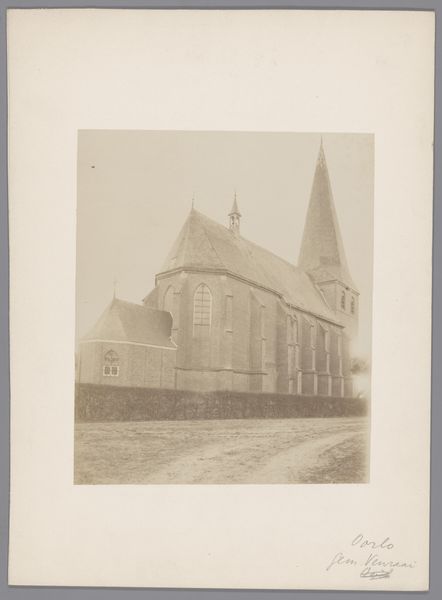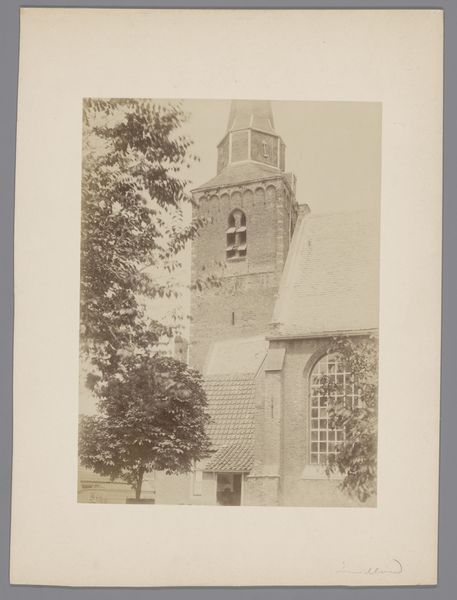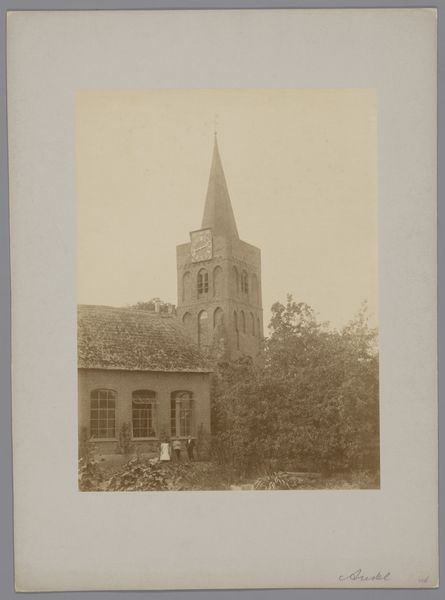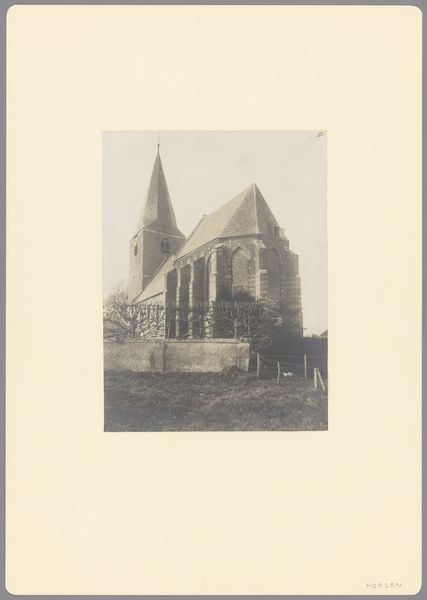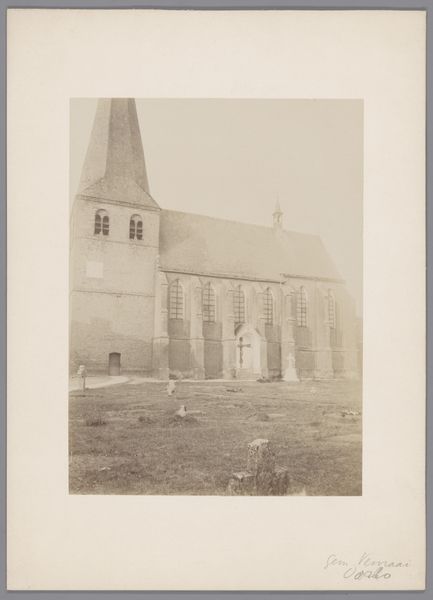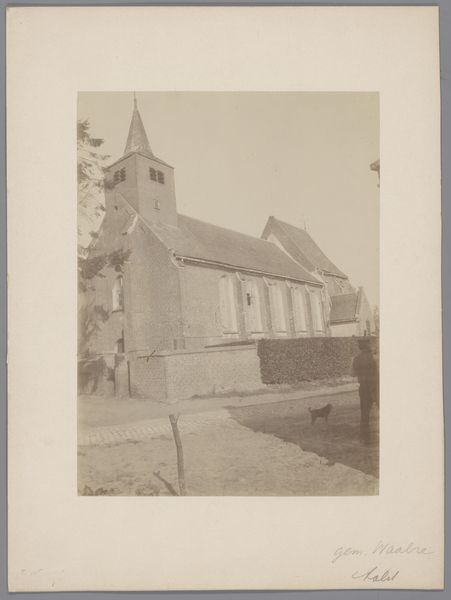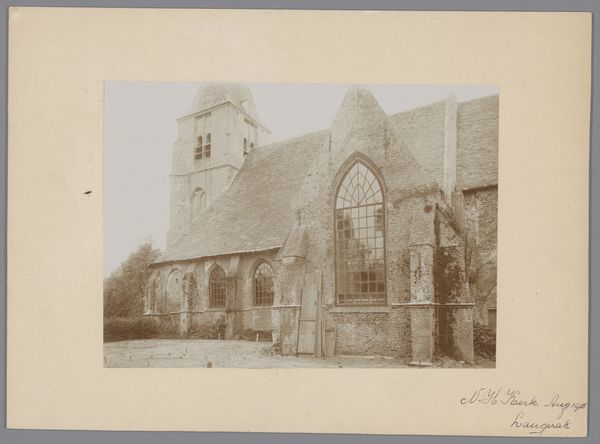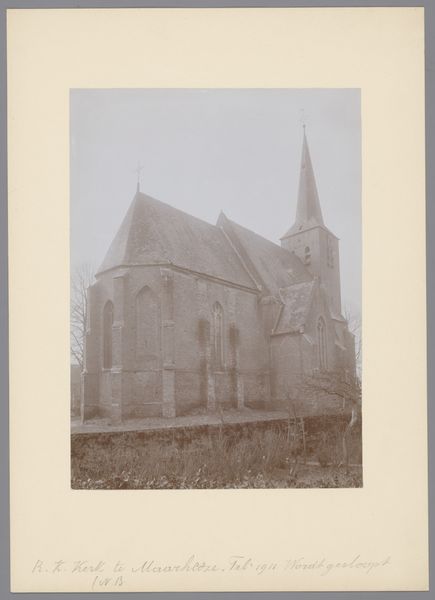
Dimensions: height 230 mm, width 171 mm
Copyright: Rijks Museum: Open Domain
Curator: Looking at this photograph, I am immediately struck by its almost ethereal quality, it seems as if it is emerging from mist or memory. Editor: Indeed. This monochrome print dating back to 1905 captures the north side of the Reformed Church in Scherpenisse. You feel that impression of softness, in part, through the printing and photographic processes themselves—the chemical reactions that rendered the brick as light and shadow. Curator: The church appears as a solid form and also conveys transience. The choice of photographing the north side, with what seems to be perpetual shadows, has interesting symbolic weight. Churches in the north frequently take on roles associated with hardship, like places of refuge, resilience, or perhaps as silent witnesses to forgotten stories. Editor: That’s interesting. For me, the image emphasizes the human labor, craft really, required to construct such a place of worship from locally sourced materials, most probably clay. Each brick laid, and you realize what sustained communal effort would have gone into this building. This in turn suggests particular attitudes toward building a community in brick and mortar and, yes, faith. Curator: Right. And the windows... notice how the barred design on those arched windows leads the eye skyward, toward an unknowable expanse, contrasting against solid, material boundaries on each pane of glass? Even though the view may be blocked out by cloud, they seem to invite transcendence of material restraints. Editor: Exactly! They certainly don't hide any mistakes: this particular image exposes, almost in defiance of artistic perfection, that very process itself of using matter. It showcases both the permanence and the fragility inherent within its structure. Look at how the mortar lines soften and merge due to aging processes alongside weathering patterns etched in against exposed brick facades that make it such engaging study point today. Curator: What lingers is a silent conversation: a dialogue with past craftsmen or craftswomen alongside builders expressing their unwavering dedications as symbols of devotion in times long gone. Its mood is contemplative and perhaps prompts feelings which resonate despite shifts throughout many later generations to those now seeing the artwork afresh through such historical representations... Editor: It underscores enduring bonds linking communal dreams, artisanal crafts plus our temporal understandings when interacting even centuries subsequently... giving meaning back continually as cultural memories endure, inspiring reflection.
Comments
No comments
Be the first to comment and join the conversation on the ultimate creative platform.
